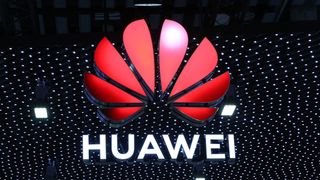Huawei ships 400,000 5G base stations as third generation Massive MIMO arrives
Huawei presses ahead with 5G vision

Discussions about security and politics are never too far from the agenda when Huawei is concerned, but the company is pressing ahead with its 5G strategy, announcing new products and claiming strong industry momentum.
Ryan Ding, the head of Huawei’s carrier business, told the Huawei Mobile Broadband Forum in Zurich that it had now shipped more than 400,000 5G base stations and has secured more than 60 5G contracts. In contrast, it took Huawei five years to shift 170,000 4G base stations.
Despite the well-documented difficulties facing the Chinese firm, it is confident that consumer and industrial demand will see this figure rise even further in the near future.
- Huawei: We can solve 5G security
- 5G in the UK: everything you need to know
- US has 'no evidence' for Huawei claims
Huawei M-MIMO
Huawei competes with the likes of Nokia and Ericsson to provide mobile operators with radio equipment and executives believe the launch of its third generation Massive MIMO (M-MIMO) platform will give it a significant technical advantage over the competition.
M-MIMO ‘tracks’ users from a base station to deliver faster speeds and support more devices. Huawei’s third generation M-MIMO supports up top 400MHz in all spectrum scenarios and transmits power of up to 320W – the highest in the industry – to allow operators to expand C-Band coverage.
It is also only 25kg in weight, allowing it to be installed by just one engineer and making it easier to deploy in sites where there is limited space due to existing equipment.
Executives were eager to claim leadership in the field, pointing out that it has been investing in M-MIMO for several years and has released three generations of the technology since 2016. Huawei argues that this body of expertise, along with its investments in chipset and radio technology mean it is better placed to serve customers.
Are you a pro? Subscribe to our newsletter
Sign up to the TechRadar Pro newsletter to get all the top news, opinion, features and guidance your business needs to succeed!
As operators begin deployment of M-MIMO and other operators start to offer similar products, Huawei is pointing out that it has 700 mathematicians on its books, all working on the algorithms that power its technology.
Competitive field
“Several years ago we predicted M-MIMO would be major trend and the convergence of frequencies with antennas would go mainstream,” said Edward Deng, President of Huawei Wireless Solutions. “Our competitors are only starting now.
“[Our third generation M-MIMO] can support greater bandwidth, higher power and greater coverage. It’s lighter to help engineers with installation and lower the cost of deployment. It also has lower power consumption to drive down OpEx.”
Huawei’s difficulties are not going away just yet, although confirmation it will not be barred in Germany’s 5G rollout is a boost, and it has used its conference to reiterate a desire to work with industry on the issue of security and to continue to play a major role in standardisation.
It is looking forward to the launch of 5G Release 16 next year, which will allow for standalone 5G, and Release 17 which will include provisions for IoT in 2021. The latter standard will be critical in delivering new services for industry.
Huawei’s blacklisting in the US has limited its access to components from the US, but for now, it is having little impact on its products.
“We have shipped 400,000 M-MIMO units [so far] and 300,000 of those were shipped after May 16,” said Chaobin Yang, head of Huawei’s 5G product line. “Some modules have US-originated components and some don’t, but from a product perspective this makes no difference. Many of our shipments these are mixed and we have no idea which ones are [which].”
- Here are the best deals for Huawei mobile phones in October 2019
Steve McCaskill is TechRadar Pro's resident mobile industry expert, covering all aspects of the UK and global news, from operators to service providers and everything in between. He is a former editor of Silicon UK and journalist with over a decade's experience in the technology industry, writing about technology, in particular, telecoms, mobile and sports tech, sports, video games and media.
